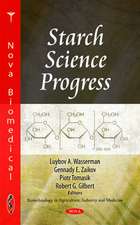A Mathematical Primer of Molecular Phylogenetics
Autor Xuhua Xiaen Limba Engleză Hardback – 8 apr 2020
The volume offers comprehensive but detailed numerical illustrations to render difficult mathematical and computational concepts in molecular phylogenetics accessible to a variety of readers with different academic background.
The text includes examples of solved problems after each chapter, which will be particularly helpful for fourth-year undergraduates, postgraduates, and postdoctoral students in biology, mathematics and computer sciences. Researchers in molecular biology and evolution will find it very informative as well.
| Toate formatele și edițiile | Preț | Express |
|---|---|---|
| Paperback (1) | 496.24 lei 6-8 săpt. | |
| Apple Academic Press Inc. – 31 mar 2021 | 496.24 lei 6-8 săpt. | |
| Hardback (1) | 663.22 lei 6-8 săpt. | |
| Apple Academic Press Inc. – 8 apr 2020 | 663.22 lei 6-8 săpt. |
Preț: 663.22 lei
Preț vechi: 887.01 lei
-25% Nou
Puncte Express: 995
Preț estimativ în valută:
126.90€ • 132.50$ • 105.03£
126.90€ • 132.50$ • 105.03£
Carte tipărită la comandă
Livrare economică 04-18 aprilie
Preluare comenzi: 021 569.72.76
Specificații
ISBN-13: 9781771887557
ISBN-10: 1771887559
Pagini: 380
Ilustrații: 85
Dimensiuni: 152 x 229 x 25 mm
Greutate: 0.72 kg
Ediția:1
Editura: Apple Academic Press Inc.
Colecția Apple Academic Press
ISBN-10: 1771887559
Pagini: 380
Ilustrații: 85
Dimensiuni: 152 x 229 x 25 mm
Greutate: 0.72 kg
Ediția:1
Editura: Apple Academic Press Inc.
Colecția Apple Academic Press
Cuprins
1. Introduction to Molecular Phylogenetics 2. Sequence Alignment 3. Nucleotide Substitution Models and Evolutionary Distances 4. Protein and Codon Substitution Models and their Evolutionary Distances 5. Substitution Rate Heterogeneity over Sites 6. Maximum Parsimony Method 7. Distance-Based Phylogenetic Methods 8. Maximum Likelihood in Molecular Phylogenetics 9. Comparative Methods 10. Appendix
Notă biografică
Xuhua Xia, PhD, has been a professor of biology at the University of Ottawa, Canada, since 2009. Prior to that, he was an assistant professor at the University of Hong Kong in 1996, and served in 2001 as a senior scientist and head of Bioinformatics Laboratory in the then-newly established HKU-Pasteur Research Centre.
Recenzii
"Gives the lay of the land in computing on DNA sequence data to reconstruct evolutionary history. The volume sensibly progresses from aligning raw sequences with one another to the models that describe their mutations and onwards to the construction of phylogenetic trees from these data, with the nuts and bolts of each method described and exemplified along the way. Professor Xia doesn’t shy away from challenging us; for example, where he treats the application of affine functions in alignment algorithms, he warns us that this is something ‘only a very good student can understand.’ Yet his explanations are so concrete and laced with pseudocode and references to real-world implementations that they invite the reader to experiment and figure out what’s going on. The Primer is geared towards researchers who are familiar with the tools and methods of the field but who now, finally, want to know how they actually work and be able to implement them by themselves. For this audience, Xia’s work compares favorably where there is overlap in subject matter with Felsenstein’s Inferring Phylogenies. For example, where the Farris algorithm is described in prose by Felsenstein, Xia helpfully describes possible implementations (using bitmasks, as connoisseurs will understand). Along the way, the reader is treated to illustrative anecdotes and the occasional, charming Canadianism: the code samples in the book are provided in MAPLE, which, we are told, is ‘a beautiful Canadian product.’ The same could be said about the Primer, and I wish it had been around when I was a graduate student."
Dr. Rutger Vos, Naturalis Biodiversity Center, The Netherlands
Dr. Rutger Vos, Naturalis Biodiversity Center, The Netherlands
Descriere
The volume provides sufficient mathematical background for young mathematicians and computational scientists, as well as mathematically inclined biology students, to make a smooth entry into the expanding field of molecular phylogenetics.

























